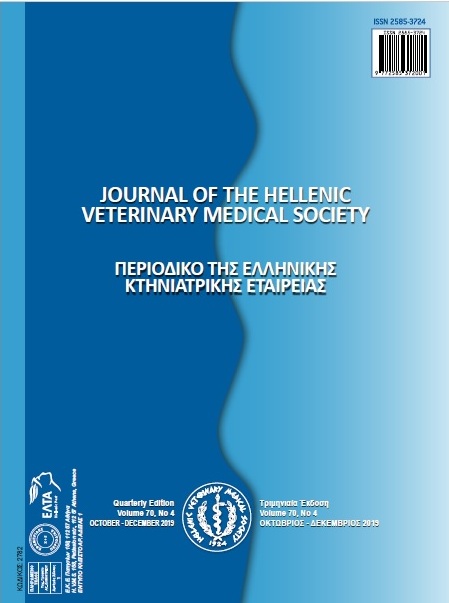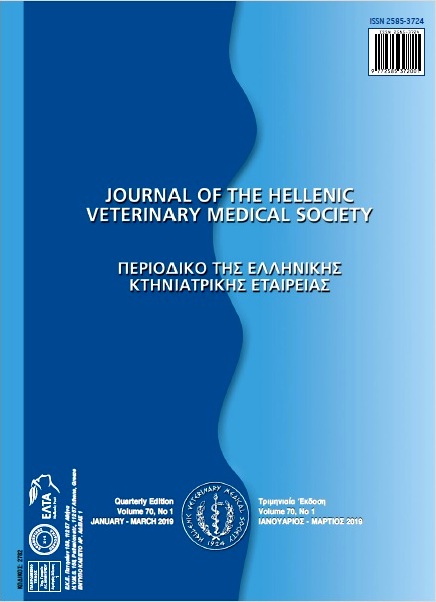Unilateral Spinal Anaesthesia in Calves
Abstract
In this study, we aimed to evaluate the effects of unilateral anaesthesia by the administration of hyperbaric bupivacaine through the lumbosacral space into the subarachnoid space in calves. A total of 10 calves with unilateral femoral fractures were included in the study. After each calf was placed in a lateral position on the side intended for surgery, 15 mg of hyperbaric bupivacaine was slowly injected into the subarachnoid space. The onset, duration and depth of anaesthesia were determined by the pinprick test (scale 1–4). In addition, heart rate, diastolic arterial blood pressure, systolic arterial blood pressure, mean arterial blood pressure, respiratory rate and body temperature of the calves were monitored and recorded from the onset to 120 min after anaesthesia. The onset of unilateral spinal anaesthesia was within 20 s and the mean duration of anaesthesia was 155.40 min. Although there were statistical differences between hemodynamic values in the study, they were within the reference values. As a result, we believe that unilateral spinal anaesthesia in calves provides adequate anaesthesia for use in orthopaedic procedures; thus, it can be used in practice.
Article Details
- Come citare
-
YAYLA, S., KILIC, E., AYDIN, U., OZAYDIN, I., BARAN, V., & KAMILOGLU, A. (2020). Unilateral Spinal Anaesthesia in Calves. Journal of the Hellenic Veterinary Medical Society, 70(4), 1883–1888. https://doi.org/10.12681/jhvms.22239
- Fascicolo
- V. 70 N. 4 (2019)
- Sezione
- Research Articles

Questo lavoro è fornito con la licenza Creative Commons Attribuzione - Non commerciale 4.0 Internazionale.
Authors who publish with this journal agree to the following terms:
· Authors retain copyright and grant the journal right of first publication with the work simultaneously licensed under a Creative Commons Attribution Non-Commercial License that allows others to share the work with an acknowledgement of the work's authorship and initial publication in this journal.
· Authors are able to enter into separate, additional contractual arrangements for the non-exclusive distribution of the journal's published version of the work (e.g. post it to an institutional repository or publish it in a book), with an acknowledgement of its initial publication in this journal.
· Authors are permitted and encouraged to post their work online (preferably in institutional repositories or on their website) prior to and during the submission process, as it can lead to productive exchanges, as well as earlier and greater citation of published work.




